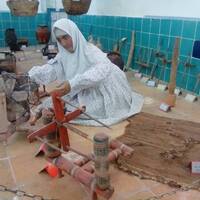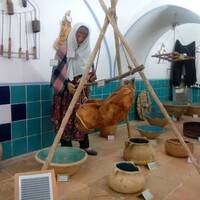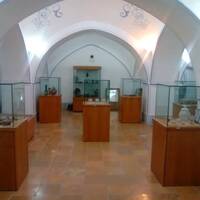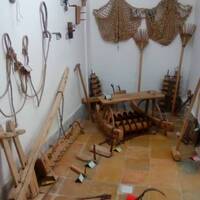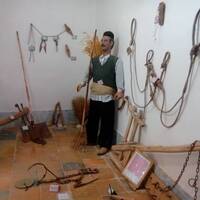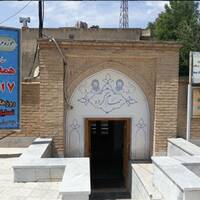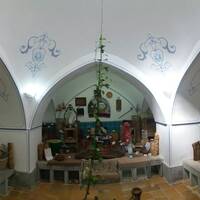Hamam-e Gurdeh Museum, belonging to the Safavid era, is one of the historical monuments of the city of Meymeh which has been transformed into an ethnographic museum. The historical bathhouse with an area of about 300 square meters is located next to the Jama Mosque and has been registered as a national heritage of Iran with the number 14195. In the past, bathhouses were one of the most important urban structures. Various factors played a role in creating the spaces and sections of a bathhouse, including controlling temperature, humidity, accessibility, and location within the urban fabric with running water and creating sewer outlets.
The hot water spring of Meymeh is located in an area of 300 square meters adjacent to the Jama Mosque, which is a structure from the Safavid era and has been registered in recent years by the National Heritage Organization and the Cultural Heritage Protection Organization.
Like other ancient baths, Hamam-e Meymeh is composed of three parts: Sarbineh (dressing room), Miandari (intermediate space between Sarbineh and Garmineh), and Garmineh (hot room). Unlike other historical baths in the city, Hamam-e Meymeh did not have a small or men’s bath, and they had to use it according to a schedule (afternoon and evening). The main hall of the Hamam is rectangular and its domed ceiling is placed over four tall columns. The Garmineh or hot room is a square section with thick columns along the Garmineh columns. This bath has a vaulted ceiling and relatively tall columns. The materials used in the construction of Hamam-e Gurdeh in Meymeh are brick and lime.
The historical building of Hamam-e Meymeh was converted into a museum in 2006 with the cooperation of Meymeh Municipality and the General Directorate of Cultural Heritage, Handicrafts and Tourism of Isfahan province. The Meymeh Museum is classified as an ethnography museum. Its main goal was initially to introduce the local culture, traditions, professions, and trade to the people of the region. Various sections including reception, information and ticket sales, hospitality and people's organizations, commercial exhibition halls, material exhibition hall, and agricultural section operate in this museum. The Hamam-e Meymeh Ethnography Museum was established about 400 years ago and has 600 old and historical objects preserved in it. Old tools used for building houses, old agricultural tools of the Meymeh tribe, chairs, pots, old iceboxes, iron cows, bread baking tools, and whips, as well as various living utensils from the past of the Meymeh region and surrounding cities, are preserved in this museum. The Hamam is located on Farhang Street, in front of the Jama Mosque in the city of Meymeh.

